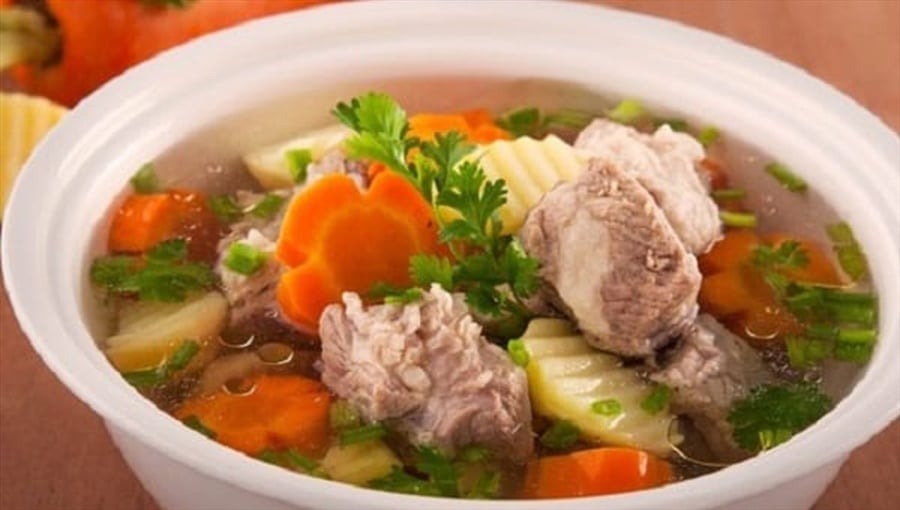How to choose delicious bone for broth
There are many types of bones from pork and beef that can be used for broth, such as spare ribs, marrow bones, pig’s head bones, pig’s trotters, knuckle bones, and many others. However, in this list, beef/marrow bones and chicken breast bones are the most popular choices for broth in dishes like noodles, pho, hu tieu, hot pot, soup, and many other dishes.
Choosing fresh bones with the natural aroma of meat is important. Avoid buying frozen bones, those with unclear origins, or those that do not guarantee quality and hygiene. If possible, choose bones from wholesale markets or get bones immediately after butchering to ensure quality and food safety for your broth.

Preparation of bones before simmering
Preparing bones before simmering requires some important steps to ensure the taste and nutrition of the dish. Cleaning the bones is an important step, however, there is no need to soak or rinse them with salt and vinegar, as this can remove the flavor and nutrients. Cutting the bones into bite-sized pieces instead of leaving them whole helps to easily absorb nutrients and sweet broth from the bones.
Before starting to simmer the bones, blanch them in boiling water to remove any unpleasant odor and impurities. It is important to discard the first boiling water, as it can make the bones smell bad and the broth will lose its flavor.
Note: Do not blanch the tail of beef, pig’s tail, or chicken breast bones, as this can remove the natural sweetness of the bones.

How to simmer bones for clear and flavorful broth
To make delicious and clear broth, you need to boil a pot of water on the stove and add the bones to simmer. Keep the heat high to bring the bone broth to a vigorous boil, then reduce the heat to maintain a gentle simmer.
During the simmering process, keep the bone broth uncovered to avoid clouding the broth. Reduce the heat to the lowest setting to allow the bones to release all the sweet flavors and skim off impurities regularly to keep the broth clear.
If you want the bone broth to look appealing, you can add a little bit of onion to the simmering pot, as onions help prevent the broth from clouding.
The simmering time for each type of bone varies: chicken bones and pork bones should not be simmered for more than 6 hours, beef bones should not be simmered for more than 10 hours, and seafood should only be simmered for about 45 minutes.
To add a flavorful taste to the bone broth, you can add a roasted purple onion to the pot. Instead of using seasoning powder, you can add salt to avoid clouding the broth.
Using vegetables is also a good way to naturally sweeten the broth compared to using MSG. Simmering pork bones for about 1 hour is enough for the bones to become soft, tender, and can be eaten again. If using the same bones to eat, you can continue to simmer for another hour if needed, but if only using the broth, then about 2 hours is enough.
How to Select the Perfect Melons for Summer Soup Creation
Are you ready to create a delicious dish featuring the versatile bitter gourd? Find out how to pick the best one for maximum flavor and texture! We’ll guide you through the process so you can whip up a fantastic feast that will be sure to please even the most demanding diners. Read on for more information!






































